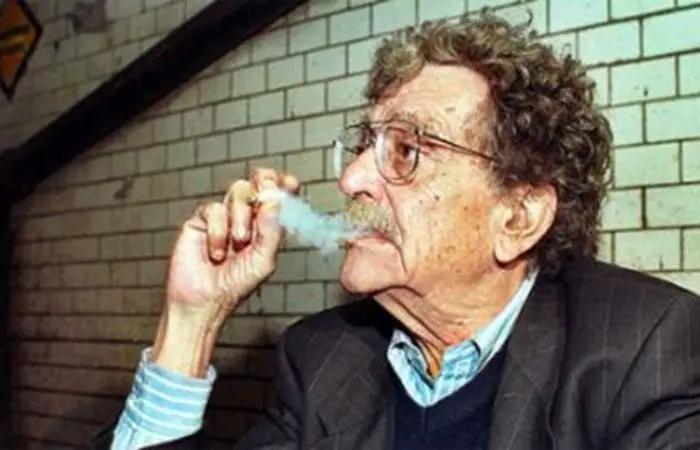New book paints Vonnegut differently NEWS

A new biography on the American author Kurt Vonnegut, loved by his worldwide fans for his Midwestern wisdom and warm humour, has shocked the public by portraying him as a bitter and angry person.
Despite being considered a genius by so many, Kurt Vonnegut felt as though the literary establishment never took him seriously. The book about Vonnegut, who passed away in 2007 has lifted the lid on his private life, detailing a man far from the grandfather figure imagined by millions of his fans.
Written by Charles Shields, author of other controversial biographies, And So It Goes reveals a man who was cruel to his long suffering first wife, distanced himself from his own children, and spent the majority of his later years angry and depressed.
'Cruel, nasty and scary are the adjectives commonly used to describe him by the friends, colleagues, and relatives Shields quotes,' wrote Wendy Smith, a reviewer on the Daily Beast website.
Chris Buckley, The New York Times, called the portrayal 'sad, often heartbreaking'.
Vonnegut's career spanned a huge five decades, through novels such as Cat's Cradle, The Sirens of Titan, and the cult classic Slaughterhouse Five. He is still thought of as one of America's greatest writers. Often working in the science fiction genre, his works still had a strong anti-war, anti-capitalist feel and he was famed for advocating socialist and humanitarian values.
However, Shields's book is generous in the depiction of Vonnegut's darker side. Revealing the writer, whose experience as a prisoner of war during Dresden fire bombings scarred Vonnegut's psyche, giving him no reservations about investing in firms that made napalm, or indulging in other morally suspect actions. Falling out with relatives, friends and editors, he had a shocking temper, and appeared later in life extremely lonely and deeply bitter. Shields describes meeting Vonnegut just a few months before he died, and describes Vonnegut asking him to find his name in a dictionary (it was not there) and then find Jack Kerouac (it was there). 'How about that?' Vonnegut frowns.
Simply titled Waiting to Die the chapter of Shields's book deals with Vonnegut's final fifteen years of life.'Towards the end he was very feeble, very depressed and almost morose. I think that slants this book,' claims Jerome Klinkowitz, one of the world's leading experts on Vonnegut.
Gregory Sumner, who recently wrote a book exploring Vonnegut's work, Unstuck In Time says 'It is a little naive to be surprised by this. Personal relationships were difficult for him. He had a lot of survivor's guilt.'
Once part of a wealthy family, who were later impoverished by the Great Depression; his parents' marriage suffered, and ended with his mother committing suicide. He lost his beloved sister to breast cancer, a day after her husband lost his life to a train accident.
The significant horror of Vonnegut's life, was his wartime experiences and survival of the Dresden bombing, only to be set to work in prison labour collecting and burning corpses. These ordeals reoccur throughout his works, but most notably became the basis of Slaughterhouse Five, the book that then went on to make Vonnegut famous.
The biography by Charles Shields, And So It Goes will do little to diminish enthusiasm for Vonnegut and his work. Gregory Sumner went on to say 'He's not a relic of the 1960s. His work is vibrant today even posthumously, maybe we just expect too much of our heroes.'

 Popular
Popular Recent
Recent Comments
Comments

















